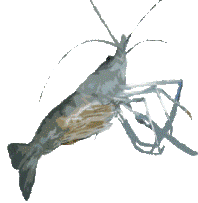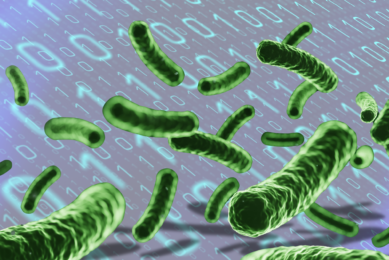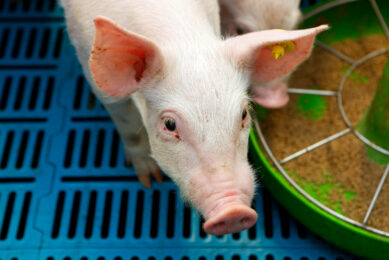Aquaculture species profit from probiotics

Despite the doubts about probiotics – Due to unrealistic claims, poor quality products or mode of delivery – appropriate probiotics do actually work in aquaculture production. Olivier Decamp and David Moriarty explain.
Aquatic animals differ from terrestrial animals in the level of interaction between the intestinal microbiota and the surrounding environment. The bacteria present in the aquatic environment influence the composition of the gut microflora and vice versa. This environmental influence is much greater for shrimp and other invertebrates than for fish. The bacterial community composition of the intestinal tract of aquatic animals is different from that found in terrestrial animals. Gram-negative facultative anaerobes generally prevail in the digestive tract of fish and shellfish; Gram-positive obligate or facultative anaerobes dominate that of humans and terrestrial animals (Gatesoupe, 1999). Aquatic animals are poikilothermic and their associated microbiota may vary with temperature changes; salinity changes in the rearing environment will also affect the microbiota. An important consequence is that the most efficient probiotics used for aquaculture will differ from those for terrestrial species.
Probiotics used in Aquaculture
Moriarty (1998) and Verschueren et al (2000) defined aquatic probiotics as live microorganisms that have a beneficial effect on the host by modifying the microbial community associated with the host, by ensuring improved use of the feed or enhancing its nutritional value, by enhancing the host response towards disease, or by improving the quality of its ambient environment. This implies a much wider range of microorganisms being used as probiotics for aquaculture animals than for terrestrial animals. The development of suitable probiotics is not a simple task. It requires empirical and fundamental research, full-scale trials and the development of appropriate monitoring tools and production under stringent quality control. Probiotics currently used in aquaculture include a wide range of taxa, from lactic bacteria (Lactobacccillus, Lactococcus, Bifidobacterium, Pediococcus, Carnobacterium), to Bacillales (Bacillus, Paenibacillus, Brevibacillus), genera (Flavobacterium, Cytophaga, Pseudomonas, Alteromonas, Roseobacter, Aeromonas, Nitrosomonas, Nitrobacter, Vibrio) and yeasts (Debaryomyces, Saccharomyces). The list is not exhaustive. The reasoning behind these microbial products varies:
Availability of strains that had been originally selected for terrestrial animals or humans.
Availability of very cheap microbial products. In this case, the performance of the product is less of an issue than the cost of such dream products.
Availability of strains that had been used for waste water treatment. This is of interest for water quality control, biofilter start-up, etc.
Research from universities and private companies leading to the selection of specific strains for aquaculture applications. Within this category, only strains that can be produced in large volumes and in a cost-efficient manner with the right quality control and safety assessments can reach the market.
Commercially available products include pure strains, defined mixtures of specific strains, but also consortia of tens of strains , but also consortia of tens of strains (as stated on label) and undefined mixtures. Products are supplied as liquids, frozen product or powder. Some of them require preparation (such as on-site fermentation, “brewing” for 1, 2 or even 3 days prior to application), whereas others are supplied at high concentration and do not require any step prior to delivery. Products that are supplied as “ready to use” powders have additional benefits, such as safety, expected consistency in performance and longer shelf life. The strains are supplied in a defined ratio (maintained until delivery) and the risk of contamination is eliminated with the absence of manipulations, such as on-site fermentation. Benefits differ
The major benefits expected from these probiotics will differ with the species (freshwater, brackish or marine, fish or crustacean), the culture stage (larvae, juvenile, broodstock) and the rearing system (flow-through or recirculation; tanks, ponds or cages). The mode of delivery and the management of the facilities (appropriate biosecurity measures, water renewal, chemicals, etc.) will affect the performance, but also the survival or residence of the microorganisms in the rearing environment and/or the host.
Claims
Despite the doubts about probiotics – due to unrealistic claims, poor quality products or mode of delivery – appropriate probiotics do actually work in aquaculture production, as can be seen from the literature. Benefits have been reported in the literature; however, they are often restricted to academic studies. They provide very useful information on the mode of action of strains and on the microbial ecology of these man-made environments. Claims that have been documented include direct inhibition of shrimp (Vaseeharan and Ramasamy, 2003; Jayaprakash et al., 2005) and fish pathogens (Nikoskelainen et al., 2001; Decamp et al., 2006;), faster growth (Ziaei-Nejad et al., 2005), stimulation of the immune system of shrimp (Rengpipat et al., 2000; Gullian et al., 2004) and fish (Nikoskelainen et al., 2004; Brunt and Austin, 2005; Taoka et al., 2006), improved water quality and, more particularly, ammonia in fish (Taoka et al., 2006), shrimp (Rengpipat, 1999) or live food production (Rombaut et al., 2003). The ability of probiotic strains to affect the bacteria flora of live food, and hence the larvae microlfora as it gets established, has also been documented (Gatesoupe, 1991; Harzevili et al., 1998; Rombaut et al., 1999; Makridis et al., 2000). The performance of these products under commercial conditions is seldom reported. Reasons include strains from academic studies that cannot be produced in sufficient quantity to demonstrate the value at commercial scales repeatedly, or the difficulty in proving performance at the farm level. Only a few companies have taken the necessary steps to develop products specifically for aquaculture that can be exploited commercially at the same time. One of the companies that conducted extensive work in this field is INVE Aquaculture with its Sanolife line of products.
Trials shrimp
The Sanolife Bacillus strains, when applied through the feed (top dressed at the farm site or at the feed mill), have been evaluated in shrimp grow out (Litopenaeus vannamei, L. stylirostris and Penaeus monodon) in Asia, the Pacific region and Latin America. The application of these bacteria (concentration ranging from 1 x 107 to 1.5 x 108 cfu/g feed according to rearing conditions), in association with suitable pond management, has led to marked benefits to the farmers:
2. Higher survival – The application of the Sanolife Bacillus led to an increased survival rate in all studied species. In a test carried out with L. vannamei in Ecuador (7 ponds with a total area of 96 ha), the survival rate increased by 62%. In Vietnam (Vinh Hau Aquaculture Co., Ltd., Vinh Loi – Bac Lieu), the same combination of probiotics Sanolife PRO-1 and PRO-2 in feed and PRO-W in water, together with adequate water quality management and follow-up of the health status of the animals, led to 100% higher harvested biomass and 10% higher survival rate compared to the control ponds.
Fish trials were performed in recirculation systems (Tianjin Haifa Seafood Industrial Development Co., Ltd., Tianjin, China). Flounder (60 – 80g) were stocked in concrete tanks and received 2 separate mixtures of Bacillus. One was mixed within the feed pellets and the second was applied directly in the water (once every 2 weeks). The fish were fed feed pellets (30% of diet) and trash fish (70% of diet). The survival and FCR were good in all tanks. A noteworthy result was the marked improvement in weight gain each month due to the combination of water and feed probiotics (Figure 3). This led to fish reaching market size much faster when receiving the Sanolife. The performance of these Bacillus strains in shrimp and fish larviculture has also been reported (Decamp et al., 2006, Decamp et al., in press).
Safety of strains
A very important issue is the safety of these strains to the target species, the environment and humans. Strains should be tested for their sensitivity to antibiotics. For some strains, tools are available that will allow the screening of specific toxins, or genes associated with the toxin production, but this is not the case with less common species. Hence, probiotic products should not include Vibrio (risk of transfer of virulence genes) or coliforms. Within Bacillus and their related genera Paenibacillus and Brevibacillus, the B. anthracis group is pathogenic for animals. The species within this group (B. anthracis, B. cereus, B. mycoides and B. thuringiensis) must not be present in any probiotics and, furthermore, Bacillus probiotics in other generally safe groups, like the B. subtilis group, must be checked to ensure they do not carry any genes for toxins from the anthrax group. The strains should also be evaluated in challenge tests and rearing trials in order to confirm their lack of toxicity to the host or other animals found in the production facilities, at doses 10 or 100x higher than the recommended doses (Makridis et al., 2005). For some strains, safety is based on historical use; they have been used in human food for a long period of time and are thus considered as safe. However, their safety to aquaculture organisms should still be investigated. Once the possible probiotic effect has been demonstrated in vivo, the ability of the strain to remain active in the aquaculture environment, to perform the expected function and to maintain itself should be demonstrated. The ability of Bacillus species to colonise (actually live and grow) in the intestinal tracts of shrimp, rather than exist as transient flora during feeding, is now the subject of investigation in a project at the Centre for Marine Studies, University of Queensland. Preliminary results reported at the 2006 WAS conference indicate that B. subtilis, or closely related species, do colonise in the midgut of Penaeus monodon (Hill et al). There are major technical difficulties, however, methods such as DGGE, RT-PCR or FISH should give us better insight into the microbial dynamics associated with reared aquatic animals.
Conclusion
The potential for probiotic use in aquaculture is immense because farmers must avoid prophylactic use of antibiotics, however, bacterial and fungal pathogens will always be present. The use of safe, natural bacteria (probiotics) to modify the microbial communities in aquatic animals and their environment and thus control the pathogens is, therefore, a sustainable alternative to the use of antimicrobial chemicals. However, one should not consider them as miracle products solving health related problems.











